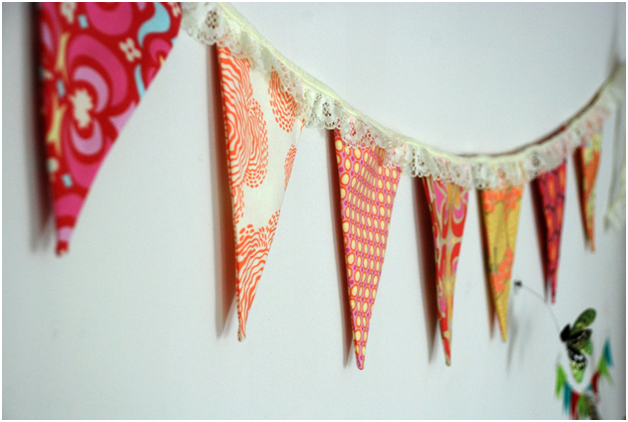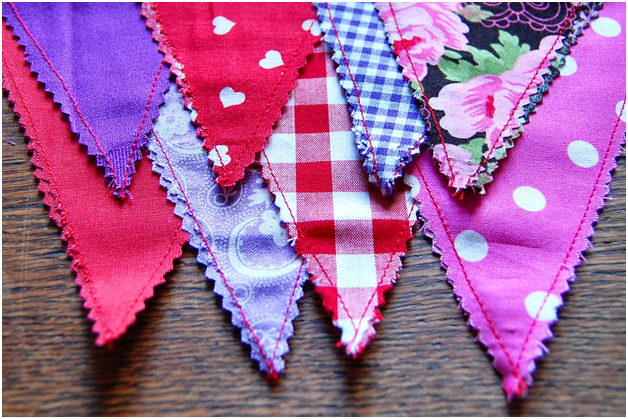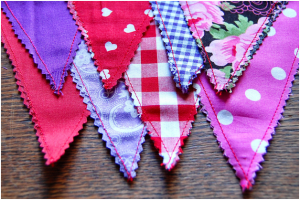We don’t always get the best of summers in the UK, but when we do get those lovely sunny afternoons, it’s great to enjoy the garden, especially with friends and family. What better way is there to decorate for your get-together than with homemade bunting?

Bunting was originally derived from pennants and flags and has naval connotations, but it is now synonymous with celebrations in a practice that goes as far back as V.E day.
What you will need
To make a couple of metres of bunting, you will need around 3 metres of fabric to be able to alternate the colours or pattern using 1.5 metres each of different fabrics. The fabric is traditionally some kind of cotton, such as cotton poplin fabric or perhaps gingham, but any fairly light type of material will work.
Suitable fabrics are available to purchase widely on the high street or online at sites such as https://www.higgsandhiggs.com/fabrics/cotton-poplin-fabric-112cm/dots/micro-pin-dots-1mm.html.
You’ll also need 2.5 metres of cream bias binding, white cotton to sew, and your usual sewing equipment like scissors and a sewing machine if you have one.

Triangles galore
Next, you need to cut out the triangle shapes that will make up your bunting. Double over your material so you are cutting triangles two at a time. Then, use a fabric marker and ruler or a homemade triangle cardboard template to mark out your triangle shapes. Cut the shapes out to get ready for the next stage.
Put it all together
Placing the good sides together and pinning first if required, sew around the two pointed edges of the triangles, leaving the top flat edge open. At this stage, you could also add trim along the edges that will be sewn in as you hem the triangles.
Next, turn them right side out and press with an iron to give them crisp edges and make the final part easier.
Sandwich the top of your triangles between the folded bias binding and pin, repeating until all your triangles are lined up and pinned along the binding with about a 5cm gap between the edge of each triangle. Using a machine or hand stitching, sew along the length of the binding, ensuring you catch both sides of the binding and the triangle material in between to bring everything together, and you’re all done.


